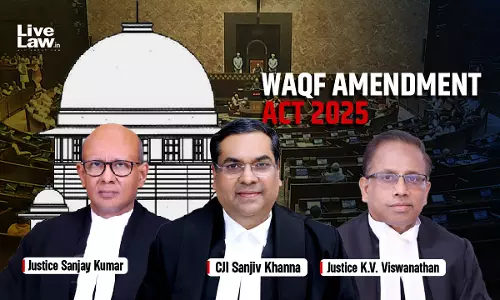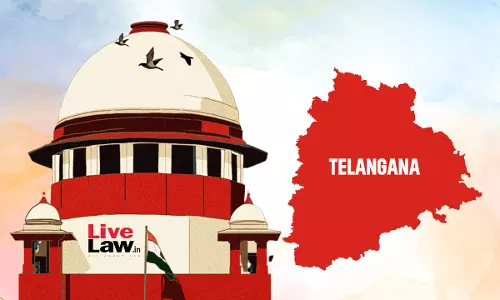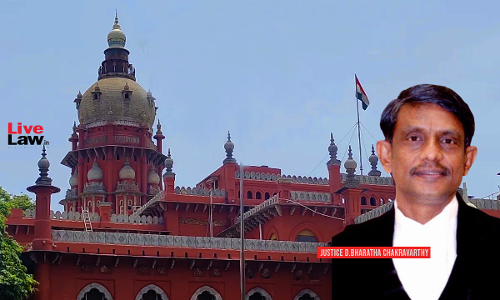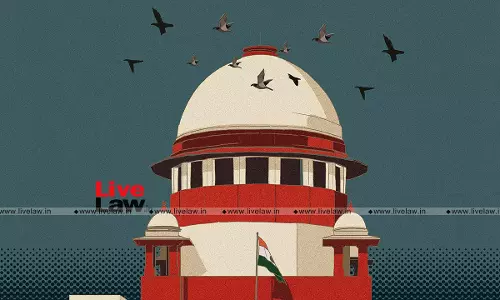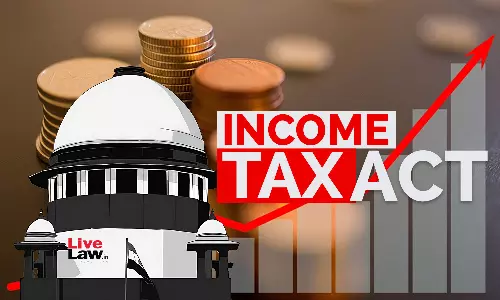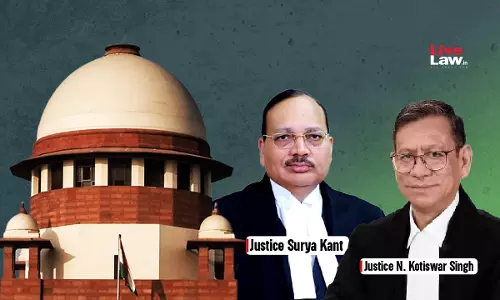Uniform Crl. Rules Of Practice For All HCs? SC Takes Cognizance On Sr.Ad.R. Basant’s Suggestions, Issues Notice To All HCs.
In a significant development, a two Judge Bench of Supreme Court comprising Justices S.A.Bobde and L Nageswara Rao has taken suo motu cognizance on the issue of ‘inadequacies and deficiencies in criminal trial’ based on Senior Advocate R. Basant’s suggestions. The matter is registered as SUO MOTU WRIT(CRL.) NO.1 OF 2017- IN RE: TO ISSUE CERTAIN GUIDELINES REGARDING INADEQUACIES...
In a significant development, a two Judge Bench of Supreme Court comprising Justices S.A.Bobde and L Nageswara Rao has taken suo motu cognizance on the issue of ‘inadequacies and deficiencies in criminal trial’ based on Senior Advocate R. Basant’s suggestions. The matter is registered as SUO MOTU WRIT(CRL.) NO.1 OF 2017- IN RE: TO ISSUE CERTAIN GUIDELINES REGARDING INADEQUACIES AND DEFICIENCIES IN CRIMINAL TRIALS.
During the hearing of a batch of Criminal Appeals relating to a political murder from Kerala, Advocate Basant has pointed out certain common inadequacies and deficiencies in the course of trial adopted by the trial courts while disposing of criminal cases.
Basant has highlighted that though there are beneficial provisions in the Rules of some of the High Courts which ensure that certain documents such as list of witnesses and the list of exhibits/material objects referred to, are annexed to the judgment and order itself of the trial court, these features do not exist in Rules of some other High Courts. The Court has accepted the fact that the judgments and orders of the trial court which have such lists annexed, can be appreciated much better by the appellate courts.
Basant was a District and Sessions Judge from 1988 to 2012 in Kerala. He was a Judge in Kerala High Court from 2002 to 2012. He was designated as a Senior Advocate in Supreme Court on 21.01.2013.
He suggested that in the interests of better administration of criminal justice and to usher in a certain amount of uniformity, and acceptance of best practices prevailing over various parts of India, Supreme Court may consider issue of certain general guidelines to be followed across the board by all Criminal Courts in the country.
Suggestions
1. The pernicious practice of the Trial Judge leaving the recording of deposition to the clerk concerned and recording of evidence going on in more than one case in the same Court room, at the same time, under the presence and general supervision of the presiding officer has to be disapproved strongly and discontinued forthwith.
2. The depositions of witnesses must be recorded, in typed format, using computers, in Court, to the dictation of the presiding officers (in English wherever possible) so that readable true copies will be available straightaway and can be issued to both sides on the date of examination itself.
3. The deposition of each witness must be recorded dividing it into separate paragraphs assigning para numbers to facilitate easy reference to specific portions later in the course of arguments and in Judgments.
4. Witnesses/documents/material objects be assigned specific nomenclature and numbers like PWs/DWs/CWs (1 onwards); Ext. P/Ext. D/Ext. C (1 onwards); MOs (1 onwards) etc., so that reference later becomes easy and less time-consuming.
5. Every judgment must mandatorily have a preface showing the name of the parties and an appendix showing the list of Prosecutions Witnesses, Prosecution Exhibits, Defence Witnesses, Defence Exhibits, Court witnesses, Court Exhibits and Material Objects.
6. Once numbers are assigned to the accused, witnesses and exhibits, they be referred to, subsequently in the proceedings and in the judgments with the help of such numbers only. The practice of referring to the names of the accused/witnesses and documents descriptively in the proceedings paper and judgments creates a lot of confusion. Whenever there is need to refer to them by name their rank as Accused/Witness must be shown in brackets.
7. Repetition of pleadings, evidence, and arguments in the judgments and orders of the Trial Court, Appellate and Revisional Courts be avoided. Repetition of facts, evidence, and contentions before lower Courts make the judgments cumbersome, and takes away the precious time of the Court unnecessarily. The Appellate/Revisional Court judgment/order is the continuation of the lower court judgment and must ideally start with “ in this appeal/revision, the impugned judgment is assailed on the following grounds” or “the points that arise for consideration in this appeal/revision are”. This does not of course, take away the option/jurisdiction of the Appellate/Revisional Courts to re-narrate facts and contentions if they be inadequately or insufficiently narrated in the judgment. Mechanical re narration to be avoided at any rate.
8. In every case file, a judgment folder to be maintained, and the first para in the appellate/revisional judgment to be numbered as the next paragraph after the last para in the impugned judgment. This would cater to a better culture of judgment writing saving precious court time.
9. The healthy practice in some states of the Investigating Officer obtaining and producing (or the wound certificate/ post mortem certificate showing) the front and rear sketch of the human torso showing the injuries listed in the medical documents specifically, may be uniformly insisted. This would help the judges to have a clearer and surer understanding of the situs of the injuries.
10. Marking of contradictions – A healthy practice of marking the contradictions/Omissions properly does not appear to exist in several States. Ideally the relevant portions of case diary statement used for contradicting a witness must be extracted fully in the deposition. If the same is cumbersome at least the opening and closing words of the contradiction in the case diary statement must be referred to in the deposition and marked separately as a Prosecution/Defence exhibit.
11. The practice of omnibus marking of S. 164 statement of witness deserves to be deprecated. The relevant portion of such prior statements of living persons used for contradiction or corroboration U/s. 145/157 of the Evidence Act deserves to be marked separately and specifically.
12. The practice of whole sale marking of confession statement of accused persons for introduction of the relevant statement admissible under S. 27 of Evidence Act deserves to be deprecated. Ideally the admissible portion and that portion alone, must be extracted in the recovery memos (Mahazar or Panch – different nomenclature used in different parts of the land) within inverted commas. Otherwise the relevant portion alone written separately must be proved by the Investigating Officer. Back door access to inadmissible evidence by marking the entire confession statement in the attempt to prove the admissible portion under S. 27 of Evidence Act should be strictly avoided.
13. The Trial Courts must be mandatorily obliged to specify in the Judgment the period of set off under Section 428 Cr.P.C specifying date and not leave it to be resolved later by jail authorities or successor presiding officers. The Judgements and the consequent warrant of committal must specify the period of set off clearly.
After considering his suggestions, the Supreme Court has directed to issue notices to Registrars General of all the High Courts, and the Chief Secretaries/the Administrators and the Advocates-General/Senior Standing Counsel of all the States/Union Territories, so that general consensus can be arrived at on the need to amend the relevant Rules of Practice/ Criminal Manuals to bring about uniform best practices across the country.
The Court has made it clear that the parties can give suggestions also on other areas of concern.
The Court indicated that it will also consider issuance of directions under Article 142 of the Constitution.
Read the Order here.


